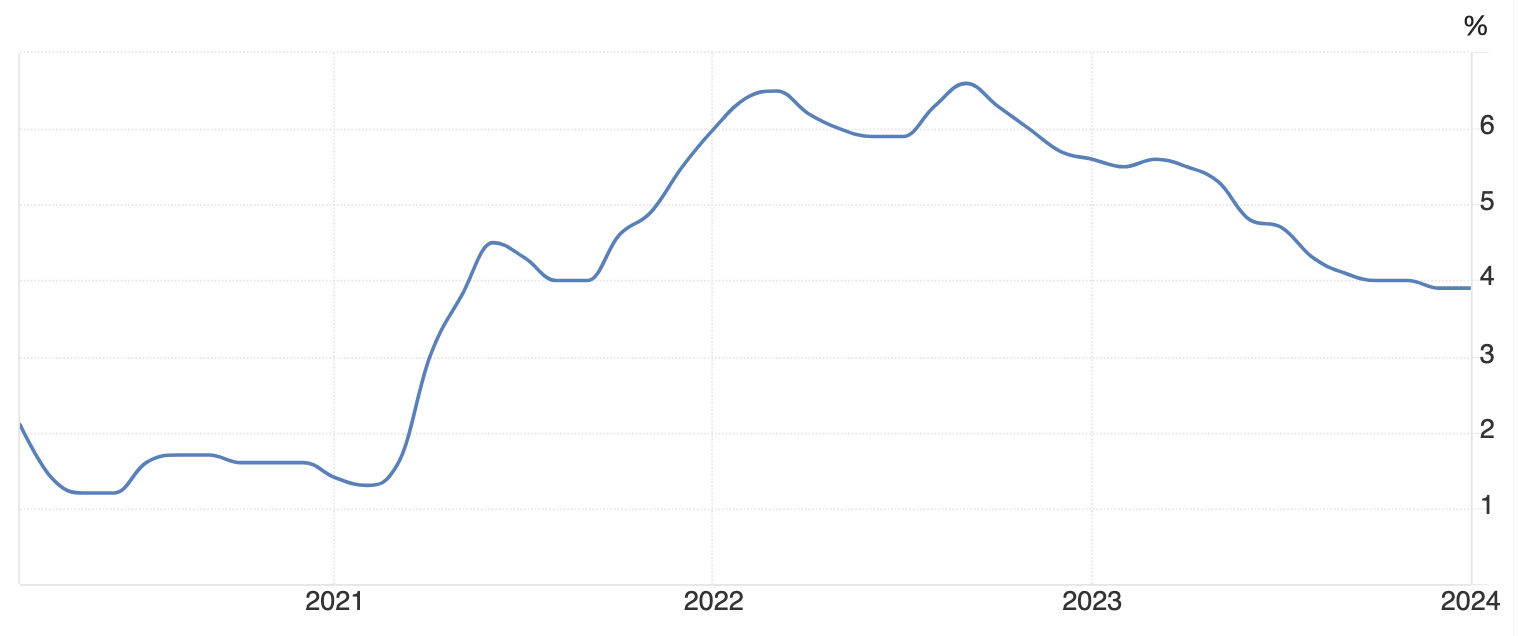Will the RBA be the last major central bank to cut interest rates?
This wire is part of a series of interviews that are taking place at the JPMorgan International Media Summit in London. Livewire is a guest at the event.
If central banks go the way that markets are expecting, the US Federal Reserve will likely start cutting interest rates by the middle of 2024 - with the European Central Bank and some of our other developed market peers not far behind. But Australia is different this time - because it's likely going to be among the last of the dollar-bloc countries to cut its benchmark rate.
So why is the RBA still a while away from cuts and how does that impact the opportunity set available to investors?
In this wire, we’ll discuss the main issues investors need to be aware of as well as where some of the best opportunities lie in the huge fixed income universe, with the help of Seamus Mac Gorain - Head of Global Rates and lead portfolio manager of multi-currency government bond portfolios at JPMorgan Asset Management.
Rate cut expectations for the Fed
Mac Gorain says rate cut expectations, expressed through pricing in the rates markets, are "about right".
"The Fed is pretty clear that if they let inflation go all the way down from 6% to 2%, then start cutting rates, it would be too late," he says. JPMorgan Asset Management expects four Fed rate cuts by the end of 2024.

What will the RBA do?
We asked Mac Gorain for his thoughts on whether the "slow to hike, slow to cut" philosophy will apply to the Reserve Bank this time.
"I think that's a fair view," Mac Gorain says. "The hiking cycle is highly correlated across colonies, much more highly correlated than any cycles we've seen in the previous 20 years. You had a common inflation shock and a common inflation response, partly because a lot of the shocks were experienced by everyone."
"What varies a bit is that countries are at a different stage in that descent cycle," Mac Gorain adds. "I think that the descent picture is clearest in the US in the eurozone, and then there are some economies where it's a bit less clear. The UK is one of those economies and Australia is another one of those economies."
There is one thing, however, that Mac Gorain doesn't agree with. Markets are currently pricing in just three RBA rate cuts (from 4.35% to 3.6%) before the middle of 2025 - and Mac Gorain says this is unlikely to materialise.
"That combination is a bit odd," he says. "It's hard to imagine the Fed cutting by a cumulative 100 basis points in the next few years and you won't see more cuts from the RBA. I don't think they've priced enough cuts for the coming years."
What matters more?
While both the start and the pace of rate cuts are important, it's likely the latter will have a larger and more lasting impact on markets.
"There's a reasonable amount of confidence when the first move will come and that means that that second part, of how much they're going to cut, becomes more important and I think the truth is that the second part featuring really deep cuts will only come in a weak growth environment," he says.
Alternatively, Mac Gorain argues there is a third way to ask this same question. It's not just about when central banks start or how much they will cut rates - it's also about where the endgame of this cycle is.
"I think it is likely that rates will end up higher than they did in the most recent cycle. The Fed is still saying that they think the new [terminal] rate is 2.5%. They've had that number for quite a long time but I think that's too low," Mac Gorain says, arguing that fiscal policy has constrained central banks' ability to react to structural changes in the economy.
Opportunities within and outside of Australia
In Australia specifically, Mac Gorain says that the time to take advantage of higher bond yields is now before reaping the rewards in 2025 and beyond.
Outside of Australia, Mac Gorain points to three unusual places for good returns in the core fixed income (lower volatility fixed income investments): Italy, Spain, and the UK.
"A 2% real yield is a good, strategic investment. There'll be points where it becomes tactically very attractive as well when we see growth weaker but strategically quite attractive among the big markets," he says.
"The structural environment with fixed income is a little bit stronger in Europe than it is in the US. Both regions have roughly similar amounts of disinflation, but the US has strong growth, whereas Europe has weak growth and I think that the fiscal architecture in the Eurozone has improved quite a lot," he adds.

